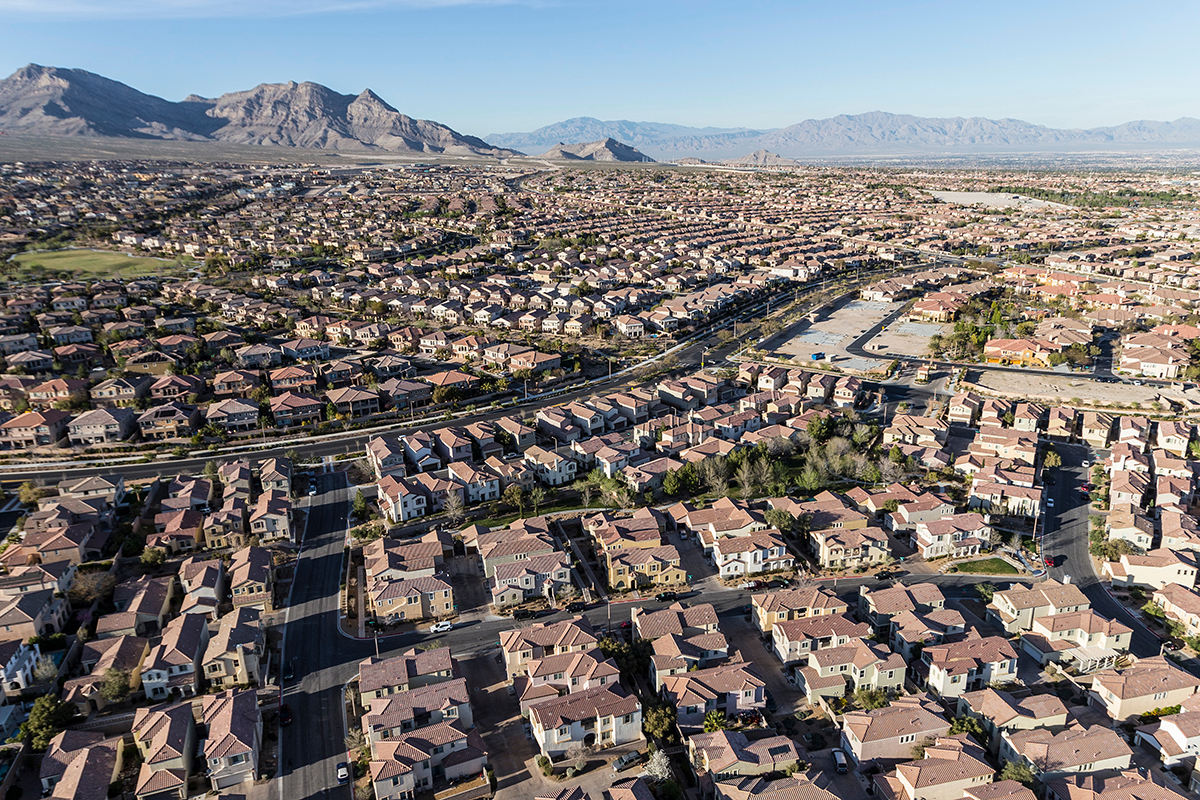
Questions about where the Southern Nevada housing market is headed have become commonplace. Most recall the economic devastation caused by the Great Recession and the corresponding global financial crisis over a decade ago. During that timeframe, Las Vegas earned the moniker of the foreclosure capital of the world. In the blink of an eye, homeowners saw their home values drop by more than half and personal wealth tied to real estate vanish. During this time, the Las Vegas area ranked first on every list of housing market devastation metrics, including foreclosures, negative homeowner equity and residential vacancies.
The challenges associated with the foreclosure crisis would persist for years. According to Las Vegas Realtors, the single-family median home price hit $315,000 in June 2006 and plummeted to $118,000 by January 2012. It wasn’t until February 2020—fourteen years later—that resale home prices finally returned to their prior peak. During this time, the national economy experienced one of its longest periods of economic contraction, followed by its longest period of economic expansion in the modern era. The cycle was long, and the housing market bore its full weight.
In March 2020, a month following the point at which many would argue the local housing market finally recovered, the COVID-19 pandemic was in full swing, the economy shut down and many feared “here we go again.” But the opposite would happen. Within the span of two years, the market skyrocketed, with single-family residential housing units posting a median price of $482,000—a gain of more than 50 percent—by May 2022. Yes, this too felt much like a repeat of 2004, 2005 and 2006.
In 2022, the national economy was white hot and characterized by supply chain challenges, low unemployment levels and 40-year highs in inflation. The Fed’s actions to tamp down the economy and get these dynamics in check has resulted in rising interest rates, including residential mortgage rates. The doubling of mortgage pricing quickly put downward pressure on consumer buying power. While the shift feels like the bottom is falling out, the reality is that today’s market dynamics are much different than they were in the mid-2000s.
Today, an estimated three quarters of homeowners have fixed-rate mortgages with an interest rate of 4 percent or less. Looming rate resetting on adjustable-rate mortgages are essentially nonexistent for current homeowners, providing increased stability. During the prior cycle, nearly half of loans had adjustable rates or were structured with interest-only payments. Subprime loans are largely a thing of the past; today’s risk profile is drastically different.
Today, homeowner equity consists of paper equity increases, but the wealth created for Southern Nevadans is also sourced to cash down payments and amortizing loans. Homeowners have invested real money in their homes that were a fraction of the market during the past cycle.
Today, housing inventory remains relatively tight. New construction has slowed to less than 10,000 homes in the pipeline, and availability on the resale market has remained limited with fewer than 10,000 homes on the market. In the prior cycle, the development community was pumping out nearly 40,000 new units in a single year, and resale inventory hit nearly 30,000 houses in the urban Las Vegas Valley.
Today, the profile of buyers is characterized by actual people looking to live in the homes they are purchasing. In the prior cycle, homebuyers were dominated by institutional investors and mom-and-pop investors who thought they couldn’t lose.
Today, the demand side of the equation remains stable with more than 70,000 people choosing to move into Southern Nevada in the past year. Assuming these trends hold, new residents should generate incremental demand for housing going forward.
While prices have the potential to adjust further in the near term, there is a better chance for a housing shortage in the coming years as opposed to a repeat performance of the prior cycle. Today looks nothing like 2007.
Members of the editorial and news staff of the Las Vegas Review-Journal were not involved in the creation of this content.


